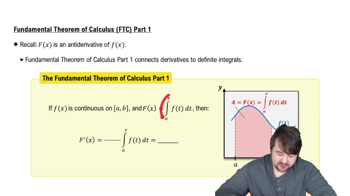The folium of Descartes (See Figure 3.27)
c. Find the coordinates of the point A in Figure 3.29 where the folium has a vertical tangent line.
 Verified step by step guidance
Verified step by step guidance Verified video answer for a similar problem:
Verified video answer for a similar problem:



 5:14m
5:14mMaster Finding The Implicit Derivative with a bite sized video explanation from Patrick
Start learning